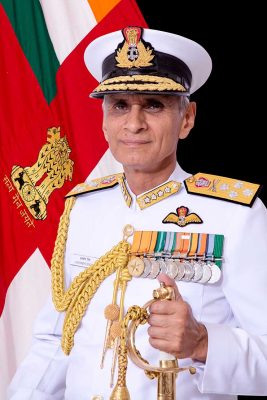
New Delhi: Facing severe financial problem, Indian Navy has sought additional funds from the government and forced it to ‘rationalise’ and reduce its critical requirements.
With the Navy’s share in the defence budget coming down to 13 per cent this financial year from 18 per cent in 2012, Chief of Naval Staff (CNS) Admiral Karambir Singh said the Navy has reworked its plan of having 200 warships by 2027.
“While, we have projected our requirement to the government, we remain committed to progress force modernisation, using the available resources optimally. In the face of shortages, emphasis is on prioritisation, rationalisation and economy of expenditure,” he said at his first press conference.
Another senior official said that the Navy has approached all forums of the government for getting additional funds. It is pushing for getting its share of the budget back to around 18 per cent.
In this backdrop, the Navy is working towards maximising the capabilities of its warships over having more numbers. When asked about the Navy’s plan to have 200 ships, he said, “We can have more modern lethal sensors on ships, so that we are better even with lesser numbers…I have directed my staff on maximising each ship in terms of effect. The more important part is what you pack into your ships.”
The Navy currently has 130 ships and 50 more are being built, including 48 in India. The under construction ships include aircraft carrier, Vikrant, P-15B Class Destroyers, P17A class stealth Frigates, Offshore Patrol Vessels and Scorpene class submarines. It has got ‘Acceptance of Necessity’ for 41 ships, 10 KM 31 helicopters, 24 Multi Role helicopters and 6 additional P-8I maritime reconnaissance aircraft.
The fund crunch also comes amid the Navy’s requirement of three aircraft carriers, so that there are two operational at all times. When asked about the second indigenous aircraft carrier, Singh said, “We are preparing our case and finalising our requirements. We will then go to the government for the Acceptance of Necessity and then will get into consultancy on the exact contours. We think it should be a 65,000 tonne carrier with CATOBAR (Catapult Assisted Take-Off But Arrested Recovery) and full electric propulsion.
India currently has only one, INS Vikramaditya. The construction of the first indigenous aircraft carrier, IAC-1, is over and its basin trials will begin. Thereafter, the work for deck based fighters, the MiG-29K, will take place. By 2022, the Navy will have a fully operational carrier, Singh said.
The Navy’s plight comes in the backdrop of China’s growing footprint in the Indian Ocean Region. The Chinese navy is quickly replacing old, single-purpose platforms in favour of larger, multi-role combatants that have advanced anti-ship, anti-air and anti-submarine weapons and sensors.









